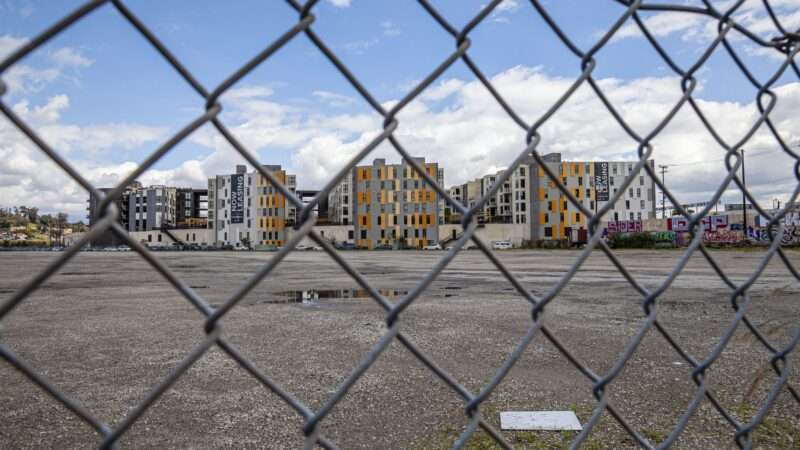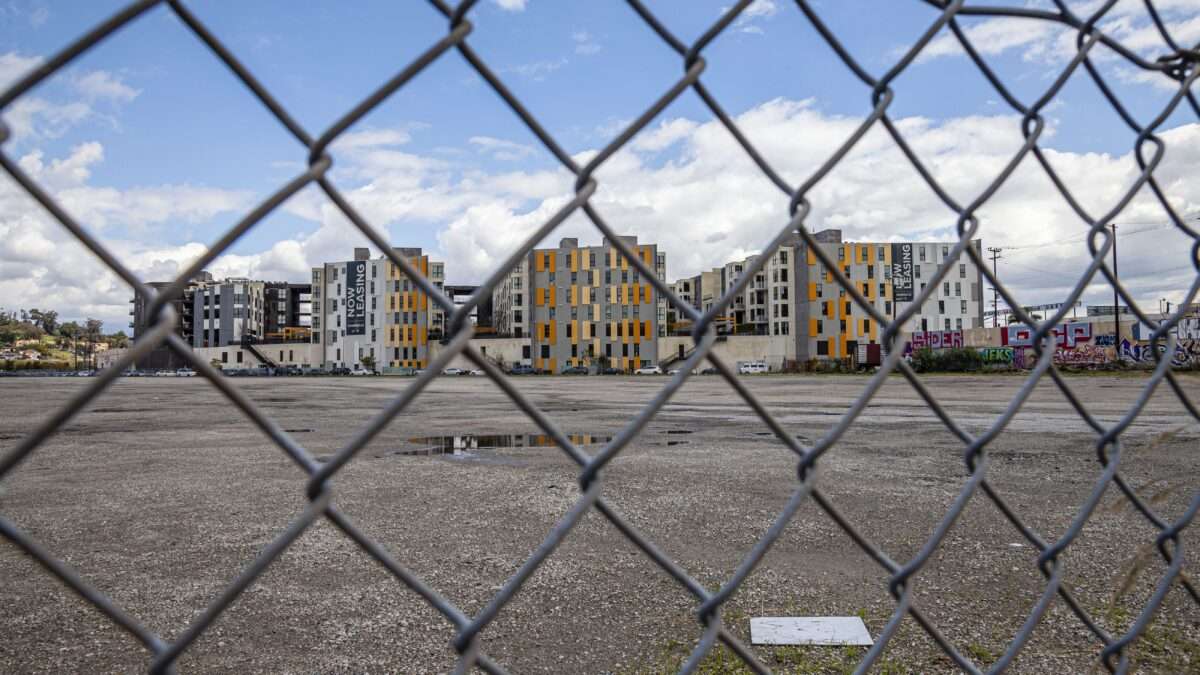Zobrazení pro čtení
Dome Keeper Is Worth Staying In The Ground For
Earl Vs The Mutants Is Hillbilly Vampire Survivors
All Concord Characters – Guide & Info
How Test Drive Unlimited Solar Crown Evolves The Test Drive Unlimited Series
Cataclismo: A Glorious Smashing of LEGO and Tower Defense
Ten Things We’re Looking Forward To In Warhammer 40,000: Space Marines 2
How Frostpunk 2 Brings Back The Series Brutalist Strategy In A New Way
Everything You Need To Know About Star Wars Outlaws
How Capcom Became The Masters Of Remasters And Remakes
Indie Game Round-Up – August 2024
Everything You Need To Know About Level Zero: Extraction
Embark on Epic Adventures With Our Summer Sale Top Picks
Dragon Eclipse Is Slay the Spire Meets Pokemon
Wayfinder Is Finally The Game We All Wanted
Death Must Die: One Of The Best Vampire Survivors-likes Out There
The Best Games Like Flintlock: The Seige of Dawn
Everything You Need To Know About Concord
Double Ball - A Public Domain game from 1992 has been preserved by the Polish Amiga Floppy Preservation Group

VinFast Delays Production After North Carolina Seizes Property for Factory Site

VinFast, a Vietnamese automaker that builds electric vehicles, announced in July that it would not begin production at its North Carolina plant for another four years. While the news is certainly a setback, the disappointment is compounded by the fact that the state is trying to bulldoze a number of private homes, and a church, to make the project happen.
In March 2022, North Carolina Gov. Roy Cooper announced that VinFast would build its first North American plant in Chatham County. The company would spend $4 billion and create 7,500 jobs, with production from the completed factory set to begin in July 2024. At its peak, the facility would be capable of producing 150,000 vehicles per year.
In exchange, North Carolina lawmakers agreed to give the company $1.25 billion in incentives, including $450 million for infrastructure, including "roadway improvements" and building out the water and sewer capacity; $400 million from the county; and a $316 million state grant paid out over 32 years, linked to the company's job creation promises. In effect, North Carolina taxpayers would be financing over 30 percent of the project.
President Joe Biden called the project "the latest example of my economic strategy at work." CNBC lauded the state's Democratic governor and Republican Legislature for "managing to put aside their very deep political divisions to boost business and the economy" when it named North Carolina America's Top State for Business.
But within two years, the deal was on shaky ground. The company announced in March 2023 that it would not be able to begin production at the factory until at least 2025 "because we need more time to complete administrative procedures," according to a company spokesperson.
Then in July 2024, in a press release about manufacturing output in the previous quarter, VinFast announced that it had "made the strategic decision to adjust the timeline for the launch of its North Carolina manufacturing facility, which is now expected to begin production in 2028," in order to "optimize its capital allocation and manage its short-term spending more effectively."
While this is disappointing news for many—company executives, shareholders, North Carolina state officials—it's worse for residents in the area.
Many of the state and county incentives are dependent upon VinFast meeting certain metrics: While the state doled out $125 million to reimburse the company for site preparation costs, it can claw back that entire amount if VinFast fails to hire at least 3,875 people—just over 50 percent of the required total. There are further clawback provisions if it doesn't hire at least 6,000 people and doesn't invest at least $2 billion into the project.
But even if the deal falls apart and the state gets its money back, some things can't be undone. As part of the deal, the North Carolina Department of Transportation (NCDOT) would conduct "roadway improvements" at the future site of the facility. As detailed in an August 2022 project overview, "private property is needed to construct the improvements proposed by the roadway project." And while the NCDOT "works to minimize impacts such as the number of homes and businesses displaced by a road project, some impacts are unavoidable."
In total, the state expected that the roadwork would "impact" five businesses, 27 homes, and Merry Oaks Baptist Church, which had stood since 1888. This meant the state was authorized to purchase the properties from the owners—or if the owners refused to sell, the state could simply take the properties through eminent domain.
Eminent domain, authorized by the Takings Clause of the Fifth Amendment, allows government entities to seize private property for public use, as long as the owner receives "just compensation." Of course, the only thing that separates this from a normal real estate transaction is that the use of eminent domain implies that the property owner did not want to sell but was forced to anyway.
While an electric car factory does not qualify as a "public use," the state is planning to bulldoze the houses, businesses, and church to make way for a new roadway interchange that will accommodate traffic to and from the site. Of course, under the U.S. Supreme Court's 2005 decision in Kelo v. New London, the state would also have been justified to seize property to give to a purely private party, with Justice John Paul Stevens writing that "there is no basis for exempting economic development from our traditionally broad understanding of public purpose."
In fact, that seems to be just what happened: In July, after VinFast announced its latest delay, the Raleigh News & Observer reported that so far the state had spent $96 million—nearly all of it on site preparation and infrastructure—and purchased four homes, with negotiations ongoing with other homeowners and two businesses. And sadly, "North Carolina has acquired two businesses and Merry Oaks Baptist Church through eminent domain, meaning negotiations fell short and the state took over the land after paying the previous owners fair market values assessed by a state-approved appraiser."
In July 2023, VinFast offered to donate up to three acres of land from its 2,000-acre parcel to Merry Oaks Baptist Church so the congregation could relocate. But a better solution would have been for VinFast to simply shoulder the burden of development in the first place, first by footing the bill for the project itself and then by obtaining land where the government did not forcibly remove any obstacles in the way.
The post VinFast Delays Production After North Carolina Seizes Property for Factory Site appeared first on Reason.com.

Clearing Rights For A ‘Non-Infringing’ Collection Of AI Training Media Is Hard
In response to a number of copyright lawsuits about AI training datasets, we are starting to see efforts to build ‘non-infringing’ collections of media for training AI. While I continue to believe that most AI training is covered by fair use in the US and therefore inherently ‘non-infringing’, I think these efforts to build ‘safe’ or ‘clean’ or whatever other word one might use data sets are quite interesting. One reason they are interesting is that they can help illustrate why trying to build such a data set at scale is such a challenge.
That’s why I was excited to read about Source.Plus (via a post from Open Future). Source.Plus is a tool from Spawning that purports to aggregate over 37 million “public domain and CC0 images integrated from dozens of libraries and museums.” That’s a lot less than are used to train current generative models, but still a lot of images that could be used for all sorts of useful things.
However, it didn’t take too much poking around on the site to find an illustration of why accurately aggregating nominally openly licensed images at scale can be such a challenge.
The site has plenty of OpenGLAM images that are clearly old enough to be in the public domain. It also has a number of newer images (like photographs) that are said to be licensed under CC0. Curious, I clicked on the first photograph I found on the Source.Plus home page:

According to the image page on Source.Plus, the image was from Wikimedia Commons and licensed under a CC0 public domain dedication. It listed the creator as Pixabay and the uploader (to Wikimedia) as Philipslearning.
Clicking through to the wikimedia page reveals that the original source for the image was Pixabay, and that it was uploaded on March 9, 2023 by Philipslearning (an account that appears to no longer exist, for whatever that is worth). The file metadata says that the image itself was taken on May 18, 2016.
Clicking through to the Pixabay page for the image reveals that the image is available under the Pixabay Content License. That license is fairly permissive, but does state:
- You cannot sell or distribute Content (either in digital or physical form) on a Standalone basis. Standalone means where no creative effort has been applied to the Content and it remains in substantially the same form as it exists on our website.
- If Content contains any recognisable trademarks, logos or brands, you cannot use that Content for commercial purposes in relation to goods and services. In particular, you cannot print that Content on merchandise or other physical products for sale.
- You cannot use Content in any immoral or illegal way, especially Content which features recognisable people.
- You cannot use Content in a misleading or deceptive way.
- You cannot use any of the Content as part of a trade-mark, design-mark, trade-name, business name or service mark.
Which is to say, not CC0.
However, further investigation into the Pixabay Wikipedia page suggests that images uploaded to Pixabay before January 9, 2019 are actually released under CC0. Section 4 of the Pixabay terms confirms that. The additional information on the image’s Pixabay page confirms that it was uploaded on May 17, 2016 (which matches the metadata added by the unknown Philipslearning on the image’s wikimedia page).
All of which means that this image is, in all likelihood, available under a CC0 public domain dedication. Which is great! Everything was right!
At the same time, the accuracy of that status feels a bit fragile. This fragility works in the context of wikipedia, or if you are looking for a handful of openly-licensed images. Is it likely to hold up at training set scale across tens of millions of images? Maybe? What does it mean to be ‘good enough’ in this case? If trainers do require permission from rightsholders to train, and one relied on Source.Plus/wikimedia for the CC0 status of a work, and that status turned out to be incorrect, should the fact that they thought they were using a CC0 image be relevant to their liability?
Michael Weingberg is the Executive Director of NYU’s Engelberg Center for Innovation Law and Policy. This post is republished from his blog under its CC BY-SA 4.0 license. Hero Image: Interieur van de Bodleian Library te Oxford
XDefiant Players Already Have One Main Complaint, But It’s Not New

XDefiant launched to positivity and constructive criticism from players, but no release is without flaws. The r/XDefiant Subreddit has had plenty of comments regarding some of the mechanics, but one of them certainly needs to be addressed by the developers.
User creepy-uncle-chad posted a meme on the r/XDefiant subreddit that poked fun at something many players are taking issue with. They titled the post “Most of my deaths in this Game,” accompanied by a gif from the movie Wanted, where a character curves a bullet around a corner to hit their target.
California Lawmakers Might Resurrect Failed 'Urban Renewal' Program

There's yet another attempt to revive California's shuttered redevelopment agencies—those crony-capitalist abominations that abused eminent domain, ran up debt without a public vote, and distorted development decisions at the local level. This year's redevelopment effort is renamed the Reconnecting Communities Redevelopment Act, but a cute new name doesn't hide redevelopment's sordid history.
It's oddly delusional even by Capitol standards to revive these tax-draining agencies when the state lacks sufficient revenues to meet its current spending. Last year, Assemblymember David Alvarez (D–Chula Vista) proposed recreating the agencies largely as they existed before Gov. Jerry Brown and the Legislature eliminated them in 2011 to help plug a gaping budget hole. It died in committee, the victim of a budget deficit estimated at around $32 billion.
Alvarez is back this year with Assembly Bill 2945 even though the current deficit is estimated at around $45 billion or higher. The state dissolved the agencies 12 years ago. Since then, lawmakers have passed measures that bring back modest portions of redevelopment—such as Infrastructure Finance Districts that use tax-increment financing to pay for limited infrastructure-related developments.
However, broader redevelopment revivals have failed—and likely will do so again. AB 2945 passed through committee but is headed toward rocky terrain. In 2019, former Gov. Brown threw shade on that year's revival effort: "A lot of people wanted to see it go, and it did free up almost $2 billion a year for schools. And if people want to bring it back they're going to take billions from the schools, and I would assume those people who care about the California public schools will fight that very hard."
Brown was spot on. As much as I'd like to think that free market arguments against redevelopment swayed lawmakers, the real bill killer came from the powerful California Teachers Association. The teachers' union clearly wouldn't ignore efforts to tap their funding sources. Sure the state backfilled those lost education dollars, but California doesn't have the spare cash to do that in the face of its remarkably large deficit.
As a refresher, California created redevelopment agencies in the 1940s to help rebuild inner-city slums. The basic redevelopment financial structure allows city governments to float bonds to pay for infrastructure related to urban-renewal projects. Cities gained the resulting increase in property taxes—called the tax increment—under the thinking that the projects spur gains in property values. That money then paid off the bonds.
By declaring an area blighted, agencies could unilaterally divert property tax revenues from traditional public services toward these privately built projects. Cities could declare virtually anything blighted (too little urbanization or too much of it, buildings with chipping paint, excessive vacant lots, insufficient tax revenue in the area, etc.) and then seek out developers to build new shopping centers or venues, or whatever is preferred in City Hall.
Traditional urban renewal projects caused their share of widely known problems, namely the obliteration of neighborhoods to make way for the above-mentioned developments. I strongly support Proposition 13, which keeps Californians from being taxed out of their homes. But after it limited tax revenues, localities came up with creative means to bolster their tax base. They learned that redevelopment could subsidize auto malls, shopping centers, and hotels that brought in additional sales taxes, so it quickly became a tax-grabbing scheme rather than an urban renewal tool.
Most noxiously, redevelopment law gave cities the power to invoke eminent domain—a property-taking power they used and abused early and often. They bulldozed neighborhoods, drove small businesses off of their land, and bullied people who lacked the resources to fight back. Often, the envisioned projects never materialized, leaving cities with vacant lots. There were some arguably successful projects, but the process worked as one would expect when the government gains unchecked power to take and redistribute property.
Redevelopment advocates claim that California needs to restore these agencies because of the housing crisis. They had set aside 20 percent of their tax increment toward affordable housing, but the state has since stepped up funding of such housing. It's a topic for another day, but because of the various union and environmental rules that come with subsidies, these projects cost far more than market-rate alternatives and haven't made a dent in the state's housing shortfalls. So adding more such spending isn't the answer.
And redevelopment exacerbated the housing crisis by teaching cities to view land-use decisions through a fiscal lens. With redevelopment, cities preferred commercial projects that brought in their sought-after sales-tax bonanza over housing developments. The best way to boost housing supply is to reduce regulations and fees—not give cities an incentive to choose big-box stores over new neighborhoods.
I know it's hard to let go of a shuttered government program, but it's time for lawmakers to move on. There's no conceivable reason to recreate these disastrous agencies.
This column was first published in The Orange County Register.
The post California Lawmakers Might Resurrect Failed 'Urban Renewal' Program appeared first on Reason.com.

Biden Pours Out Another $6.5 Billion for the CHIPS Act's Costly Protectionism

The White House this month announced plans for how it will direct billions of dollars in funding toward semiconductors, marking a new phase in the implementation of the CHIPS and Science Act.
The $280 billion legislation, signed into law in 2022, aims to bolster semiconductor production in the U.S. President Joe Biden's administration said Monday that it will funnel $1.5 billion to GlobalFoundries, a semiconductor manufacturing and design company, to increase its domestic output. Perhaps more significant, however, was Biden's dispatch earlier this month announcing the administration will use at least $5 billion to establish a National Semiconductor Technology Center (NSTC), which will, among other things, support "the design, prototyping, and piloting of the latest semiconductor technologies," according to the White House.
This latest effort is part of the government's expensive and protectionist public-private partnership meant to address concerns over a reliance on foreign countries, like China, for chips.
"Semiconductors were invented in America and serve as the backbone of the modern economy," the White House said in a statement. "But today, the United States produces less than 10 percent of global supply and none of the most advanced chips."
The NSTC will supposedly also play a crucial role in expanding the semiconductor workforce to manufacture computing chips that can complement advances in artificial intelligence and related industries. Semiconductors are projected to become a $1 trillion industry by 2030, according to McKinsey & Company.
The CHIPS and Science Act has several eyebrow-raising elements, including $81 billion for the National Science Foundation—doubling the agency's budget over five years. Another $24 billion will go toward tax credits meant to subsidize and incentivize private companies to invest in semiconductors.
While the legislation was likely well-intentioned, it was doomed to have protectionist ramifications. "To defeat China, the argument goes, the U.S. must adopt the tactics of the Chinese Communist Party, at least when it comes to high-end manufacturing," Reason's Eric Boehm wrote in January 2023. But that ham-handed approach to industrial policy and corporate welfare drives up the deficit and hampers economic growth at very little benefit to the taxpayer, who are forced to fund these initiatives.
It's likely unsurprising that many large corporations lobbied for the CHIPS and Science Act, including Meta, Microsoft, Google, Amazon, Apple, Northrop Grumman, Carrier, Trane, and General Dynamics, as well as labor unions like the American Federation of Labor and Congress of Industrial Organizations and the Communications Workers of America. "Big government means big lobbying," wrote David Boaz, a senior fellow at the Cato Institute. "When you lay out a picnic, you get ants. And today's federal budget is the biggest picnic in history."
The CHIPS and Science Act passed with bipartisan support. But its detractors were also made up of strange bedfellows. Sen. Bernie Sanders (I–Vt.) and then-Rep. Kevin McCarthy (R–Calif.) both referred to the law as "corporate welfare" and a "blank check." Sanders went as far as to call it a "bribe."
"When the government adopts an industrial policy that socializes all the risk and privatizes all the profits, that is crony capitalism," Sanders said.
He's not wrong. The law "is another episode of politicians granting favors to their friends in the semiconductor industry," Veronique de Rugy, a contributing editor at Reason and a senior research fellow at the Mercatus Center, wrote last year. Such an approach "punishes those who aren't elite or can't organize to extract favors from politicians."
Michelle Nuzzo-Kelly is an apt example. She was among the residents of Burnet Road near Syracuse, New York, who received several offers to purchase her home. But those offers didn't come from private buyers: They came from the government, as Onondaga County sought to expand a plot of land so it could attract a developer. Micron, one of the world's largest semiconductor manufacturing firms, is now set to build a facility there, thanks to lucrative taxpayer-funded subsidies from the state and federal government.
"The offers to buy Nuzzo-Kelly's home were never really just offers," Boehm wrote when covering the case in November 2022. "They were demands backed by a threat to use government power to force her to sell."
The post Biden Pours Out Another $6.5 Billion for the CHIPS Act's Costly Protectionism appeared first on Reason.com.

